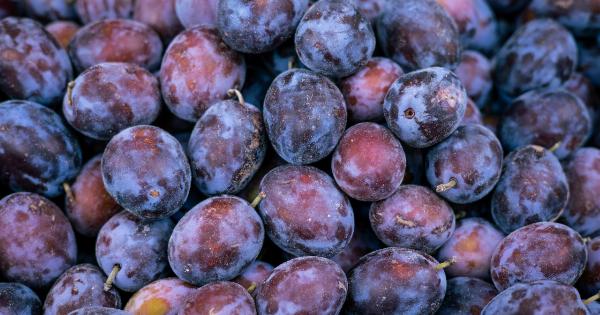Have you ever wondered what happens when you apply pressure to fruits and vegetables? Many people assume that it would lead to squishing or crushing, which certainly is true.
But what about the fascinating transformations in the cells and tissues that accompany pressure? This process unlocks biochemical reactions that produce tasty and healthy snacks that can tantalize your taste buds, and invigorate your body. In this article, we will delve into the science behind the tantalizing fruit under pressure, exploring how pressure activates different metabolic pathways.
We will also show you easy and quick ways to prepare pressure-treated fruits so you can enjoy their rich flavors and nutrients.
What happens when fruits are subjected to pressure?
At a microscopic level, fruits and vegetables are made up of small cells enclosed within cell walls or membranes.
These cell walls are composed of tough and fibrous substances such as cellulose, pectin, and lignin that give shape and rigidity to the fruits. When you apply pressure to fruits, you physically break or damage these cell walls, thus altering the texture, size, and appearance of the fruit.
However, pressure treatment also stimulates a series of chemical reactions that occur within the plant cells.
For instance, when you squeeze or compress grapes or berries, you induce the release of valuable polyphenolic compounds such as anthocyanins, flavonols, and resveratrol, which have potent antioxidant and anti-inflammatory properties. These bioactive compounds protect against a wide range of chronic diseases such as cancer, diabetes, and heart disease, and have also been shown to improve brain function, memory, and mood.
Similarly, subjecting avocado to pressure can alter the texture and viscosity of the flesh, making it creamier and spreadable.
This texture change occurs because the pressure triggers the activation of natural enzymes that break down the structural proteins and fibers of the avocado, creating a smoother consistency that is perfect for dips and spreads.
Moreover, applying pressure to citrus fruits like lemons and oranges can increase the yield of juice extraction.
This is because the pressure ruptures the juicy vesicles or cells within the fruit, releasing more juice, and breaking down the cell membranes.
The Science behind Pressure Activated Biochemical Pathways
Pressure-treated fruits and vegetables offer unique health benefits due to the activation of pressure-linked biochemical pathways.
For example, when you subject fruits to high hydrostatic pressure (HPP), you initiate the breakdown of complex macromolecules such as polysaccharides, proteins, and lipids into simpler forms that are more easily absorbed by the human body.
Moreover, HPP can enhance the bioavailability and solubility of insoluble nutrients such as vitamin C, lycopene, and carotenoids, making them more readily absorbed and utilized by the body.
Additionally, pressure treatment creates pores and channels within the cell membranes, which allow for better and faster nutrient uptake.
Furthermore, HPP can activate a range of metabolic pathways that ultimately lead to increased antioxidant and anti-cancer activity.
For instance, HPP can stimulate the expression of heat shock proteins that protect against stress, promote cell survival, and enhance immune function. HPP can also upregulate the activity of various enzymes involved in detoxification and cellular repair, thereby reducing inflammation and oxidative damage.
Pressure-Treated Fruit Snacks Recipes
Here are some quick and easy recipes that you can try for making delicious fruit snacks that are packed with nutrients and flavor:.
Pressure-Treated Grapefruit Salad
Ingredients:.
- 2 grapefruits
- 1 teaspoon honey
- 1 tablespoon olive oil
- 1 teaspoon of salt
- A handful of mint leaves
Instructions:.
- Cut the grapefruits into halves
- Slice into thin wedges
- Squeeze the juice out of the grapefruit halves into a bowl
- Add honey, olive oil, and salt to the grapefruit juice, and whisk until completely combined
- Arrange the grapefruit wedges on a platter
- Drizzle the grapefruit juice mixture over the wedges
- Garnish with fresh mint leaves
- Enjoy your fresh and vibrant grapefruit salad!
Pressure-Treated Avocado Spread
Ingredients:.
- 2 ripe avocados
- 1 lime, juiced
- 1 clove garlic, minced
- 1 teaspoon salt
- 1 tablespoon chopped cilantro
Instructions:.
- Cut the avocados into halves, remove the seeds, and scoop out the flesh
- Add the avocado flesh, lime juice, garlic, salt, and cilantro to a food processor
- Pulse the ingredients until you get a smooth and creamy consistency
- Serve the avocado spread on bread, crackers, or anything you like.
Conclusion
In summary, pressure-treated fruits offer unique health benefits, ranging from improved nutrient availability to enhanced antioxidant and anti-cancer activities.
The underlying biochemical reactions that occur upon pressure treatment turn ordinary fruits and vegetables into delightful and tantalizing snacks that are packed with flavor and nutrients. To enjoy these benefits, you can try out some simple pressure-treated fruit recipes, such as the ones we provided in this article.
By incorporating more pressure-treated fruits into your diet, you are not only promoting your health and wellbeing but also experiencing a wealth of new culinary experiences!.































